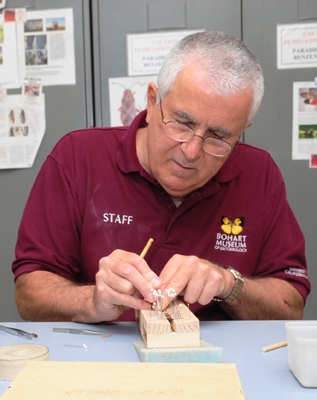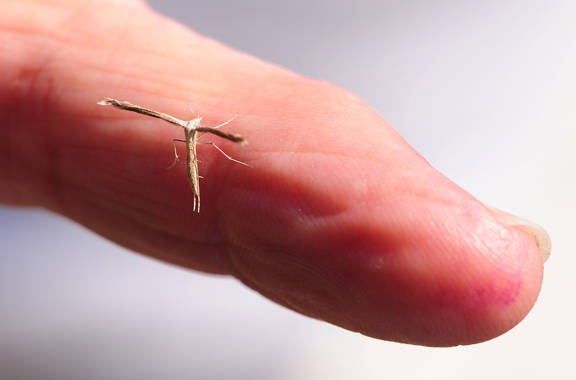
Do you know where your moths are?
It so happens that July 18 marks the beginning of National Moth Week, and that event has not gone unnoticed by the Bohart Museum of Entomology.
Moths, considered among the most diverse and successful organisms on earth, will be featured at the museum's first-ever evening open house on Saturday, July 18.
The special activity, “Moth Night,” will take place from 8 to 11 p.m. at 1124 Academic Surge on Crocker Lane, UC Davis campus. Free and open to the public, it will include outdoor collecting; viewing of the Bohart Museum's vast collection of worldwide moth specimens; demonstrations on how to spread the wings of a moth; and information on how to differentiate a moth from a butterfly. Free hot chocolate will be served.
Tabatha Yang, public education and outreach coordinator of the Bohart, said that after the sun sets, a black light demonstration will be held. Visitors will collect moths from a white sheet, much as residents do around their porch lights.
Entomologist Jeff Smith of Rocklin, an associate and 27-year volunteer at the Bohart Museum, will show visitors how to spread the wings of moths. Smith curates the 400,000-specimen Lepidoptera collection at the Bohart Museum. Smith organizes and identifies the butterflies and moths, creates the drawers that display them, and the labels that identify them. In between, he shares his passion for insects and spiders at outreach programs. Smith has spread the wings of 200,000 butterflies and moths, or about 7000 a year, since 1988.
Naturalist Greg Kareofelas of Davis, a longtime associate at the Bohart Museum, will assist with the open house and the outdoor collecting. The Bohart Museum, directed by Lynn Kimsey, professor of entomology at UC Davis, is a world-renowned insect museum that houses a global collection of nearly 8 million specimens.
Moths continue to attract the attention of the entomological world and other curious persons. Scientists estimate that there may be more than 500,000 moth species in the world. “Their colors and patterns are either dazzling or so cryptic that they define camouflage,” according to National Moth Week spokespersons. “Shapes and sizes span the gamut from as small as a pinhead to as large as an adult's hand.” Most moths are nocturnal, but some fly during the day, as butterflies do.
Do you know how to tell butterflies and moths apart? You'll learn from the experts Saturday night, July 18.
Attached Images:

